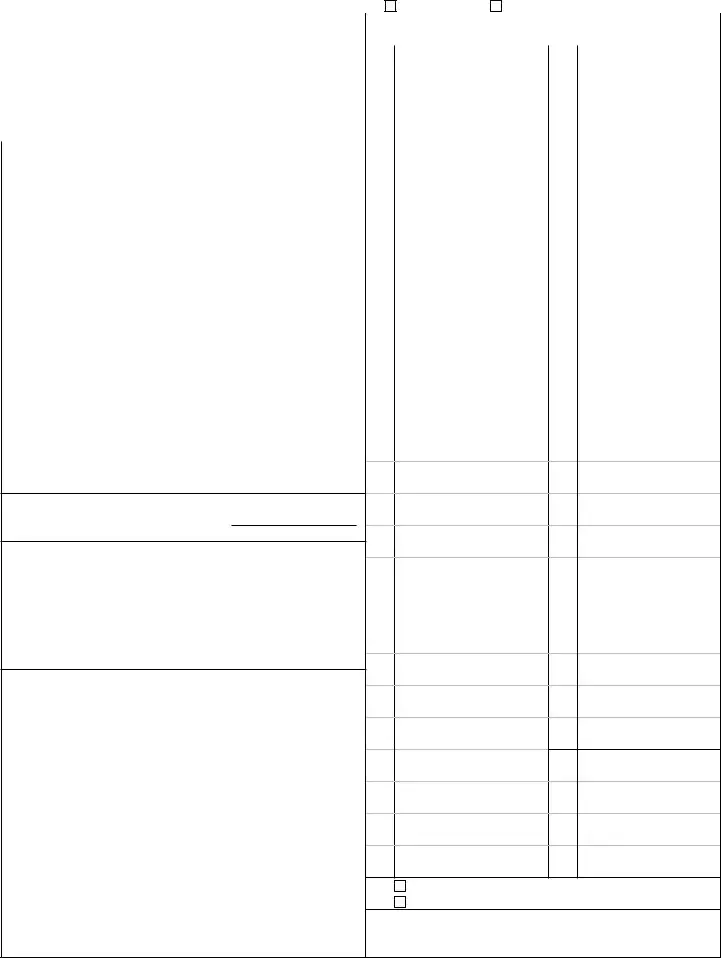The IRS Schedule K-1 (Form 1065) serves a purpose akin to the IRS Schedule K-1 1120-S form, but it is specifically used by partnerships. Both documents are essential for reporting each partner's share of the business's income, deductions, credits, etc. While the Schedule K-1 1120-S is for S corporations, providing the shareholders with necessary information for their tax returns, the Form 1065 variant does the same for partners in a partnership. This ensures that all income is reported accurately by each individual on their personal tax returns.
Form 1041 (Schedule K-1) is another document that shares similarities with the IRS Schedule K-1 1120-S form, with its primary use being for estates and trusts. This version of Schedule K-1 conveys the beneficiary's share of the estate or trust's income, deductions, and credits. Even though the entities differ—trusts and estates versus S corporations—the underlying purpose remains consistent: to provide beneficiaries or shareholders with the specific financial information needed for their personal tax filings.
The IRS Form 1120 is akin to the Schedule K-1 1120-S in that it is used by corporations to report their income, gains, losses, deductions, credits, and to figure out their income tax liability. However, Form 1120 is used by C corporations, which are taxed separately from their owners, contrasting with S corporations that pass through their income to shareholders. This distinction highlights how both forms serve to ensure that businesses report their income accurately, albeit under different taxation frameworks.
Form 1099-DIV, Dividends and Distributions, shares a common goal with the IRS Schedule K-1 1120-S form: reporting income. While Schedule K-1 1120-S is for shareholders of an S corporation to report profit, losses, and dividends on their personal tax returns, Form 1099-DIV applies to investors receiving dividends from stocks or mutual funds. The similarity lies in their purpose to inform the recipient about income that must be reported on their tax return, ensuring proper taxation of income from different sources.
Form 8865 (Schedule K-1) also parallels the IRS Schedule K-1 1120-S, yet it specifically caters to U.S. persons who are partners in foreign partnerships. Like its domestic counterparts, this form reports the partner's share of income, deductions, and credits from the foreign partnership. The information provided helps U.S. taxpayers to accurately report foreign income on their tax returns, thereby fulfilling similar reporting obligations as those with domestic partnerships and S corporations to prevent underreporting of income and tax evasion.
The W-2 form, though used for different purposes, shares an essential reporting function similar to the IRS Schedule K-1 1120-S form. The W-2 is given to employees to report wages, tips, and other compensation received, along with taxes withheld during the year. While the W-2 is employment-related and Schedule K-1 1120-S pertains to investment in S corporations, both are crucial for individuals to accurately report income and taxes paid to the IRS on their personal tax returns.
Finally, the Schedule D (Form 1040) is used by taxpayers to report capital gains and losses from the sale or exchange of capital assets. Similar to the IRS Schedule K-1 1120-S, the primary connection is the reporting of financial transactions that affect an individual's tax obligations. Although Schedule D deals specifically with capital assets and Schedule K-1 1120-S deals with income from S corporations, both forms contribute essential details that influence an individual's total tax liability, demonstrating the broader ecosystem of tax documentation aimed at capturing all sources of income.

